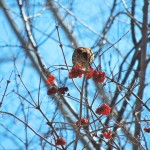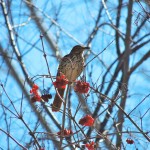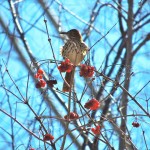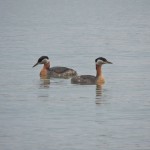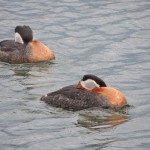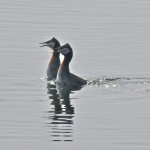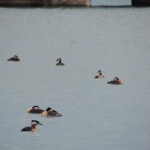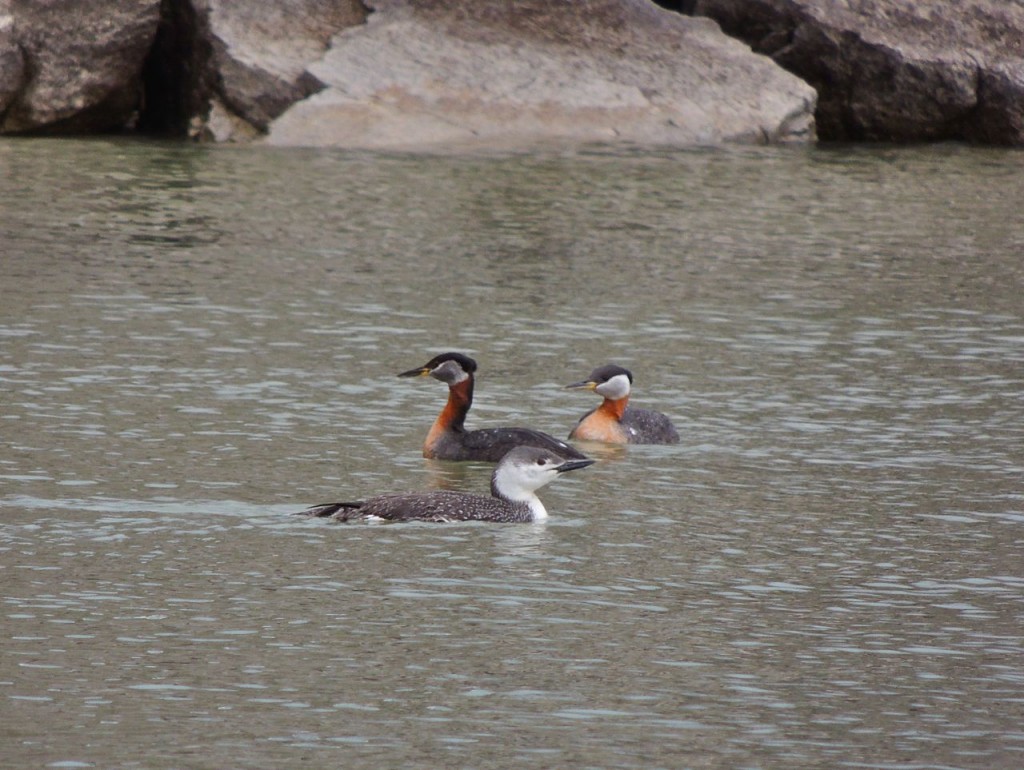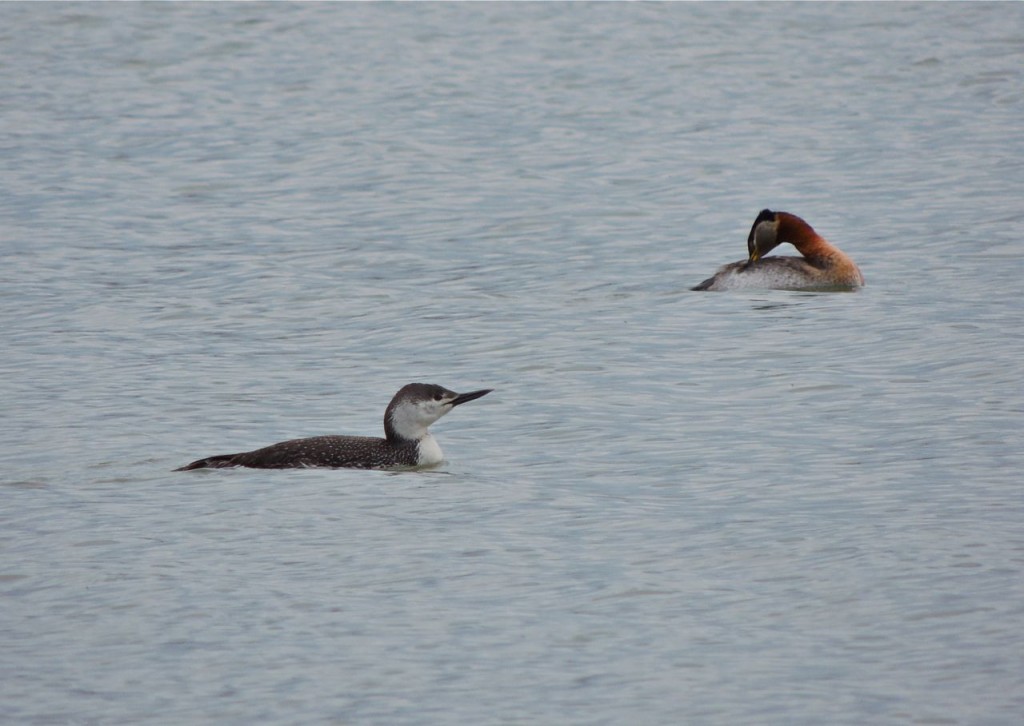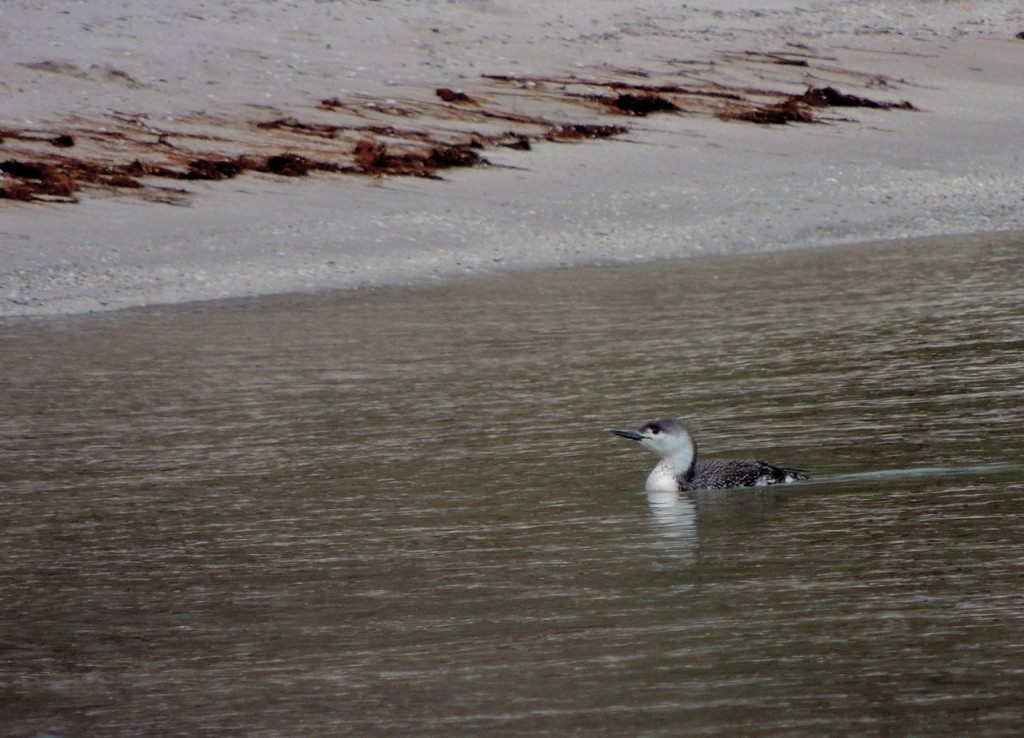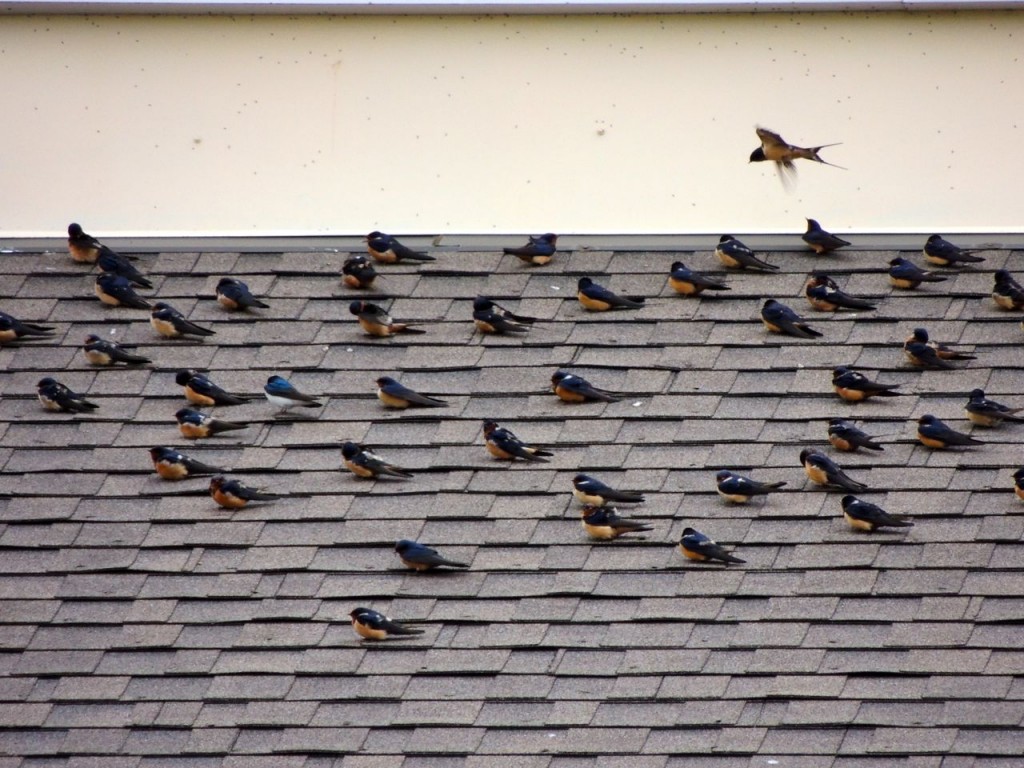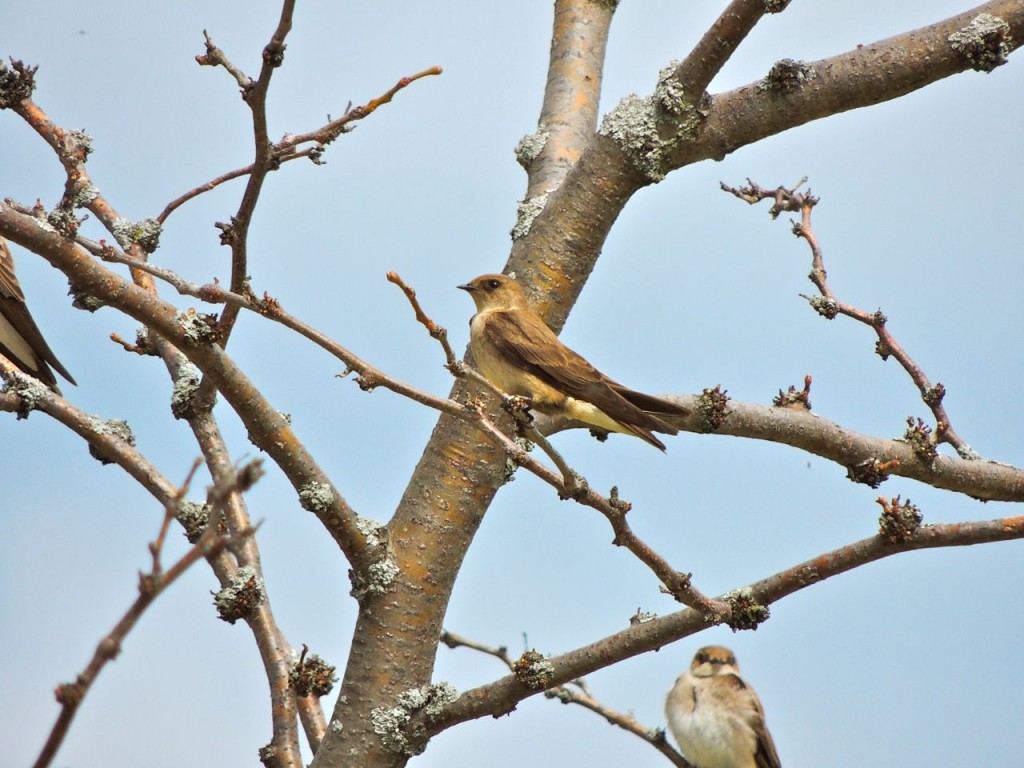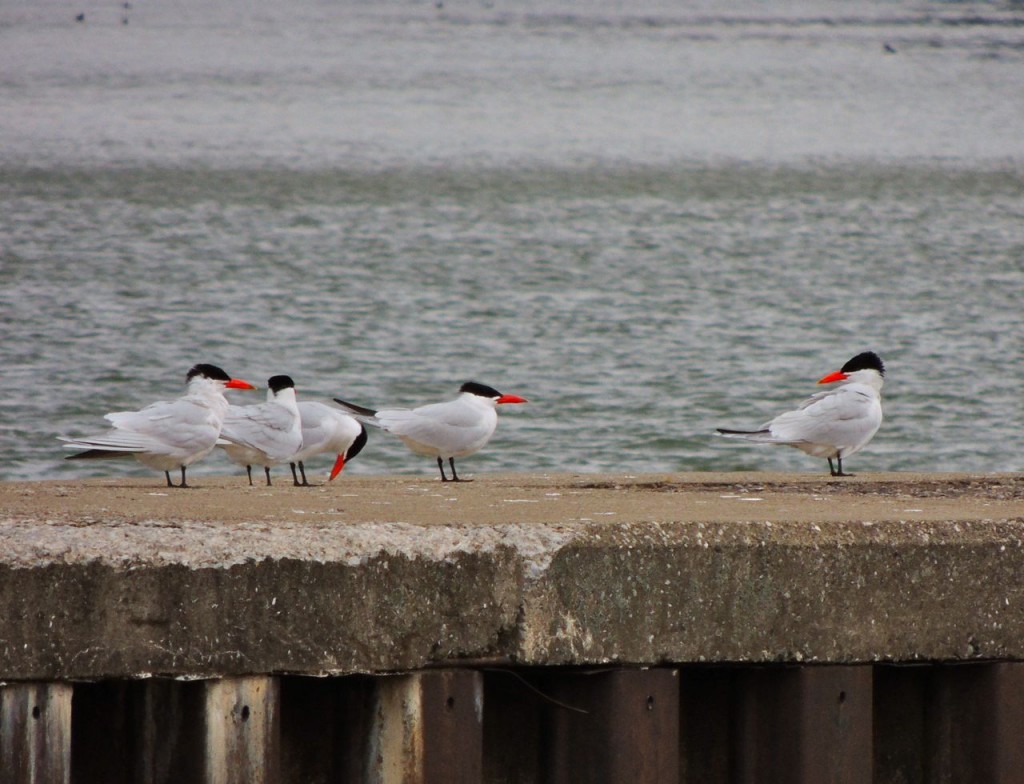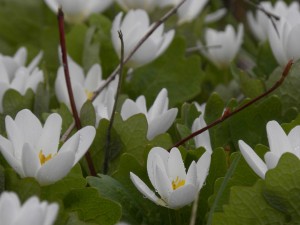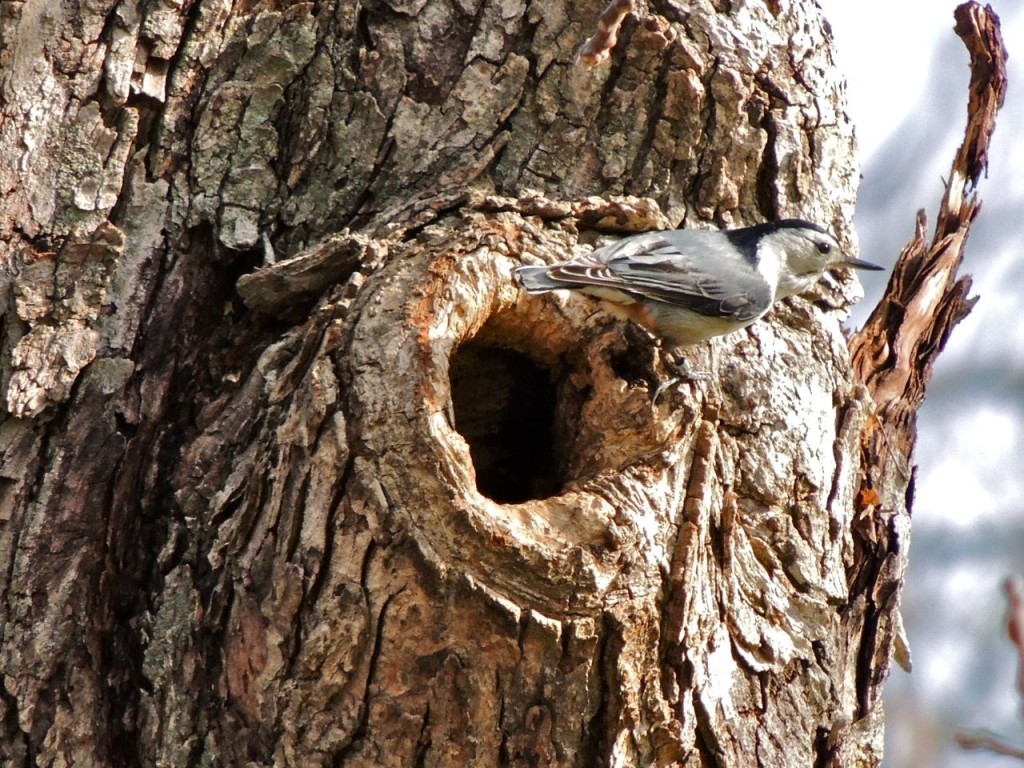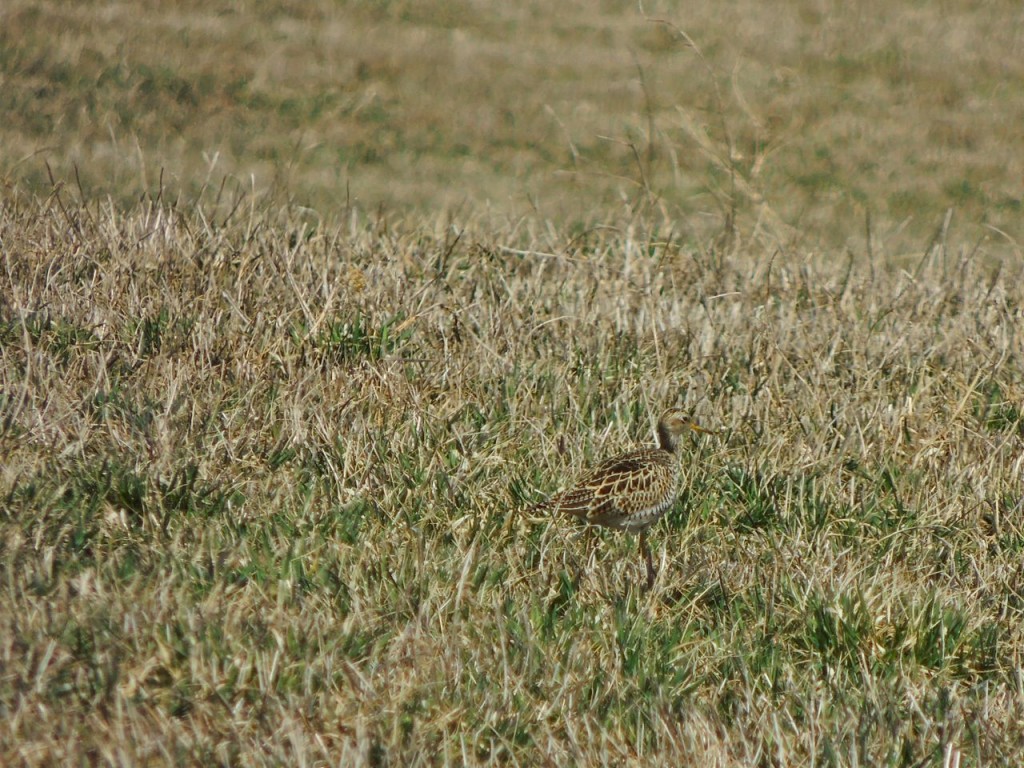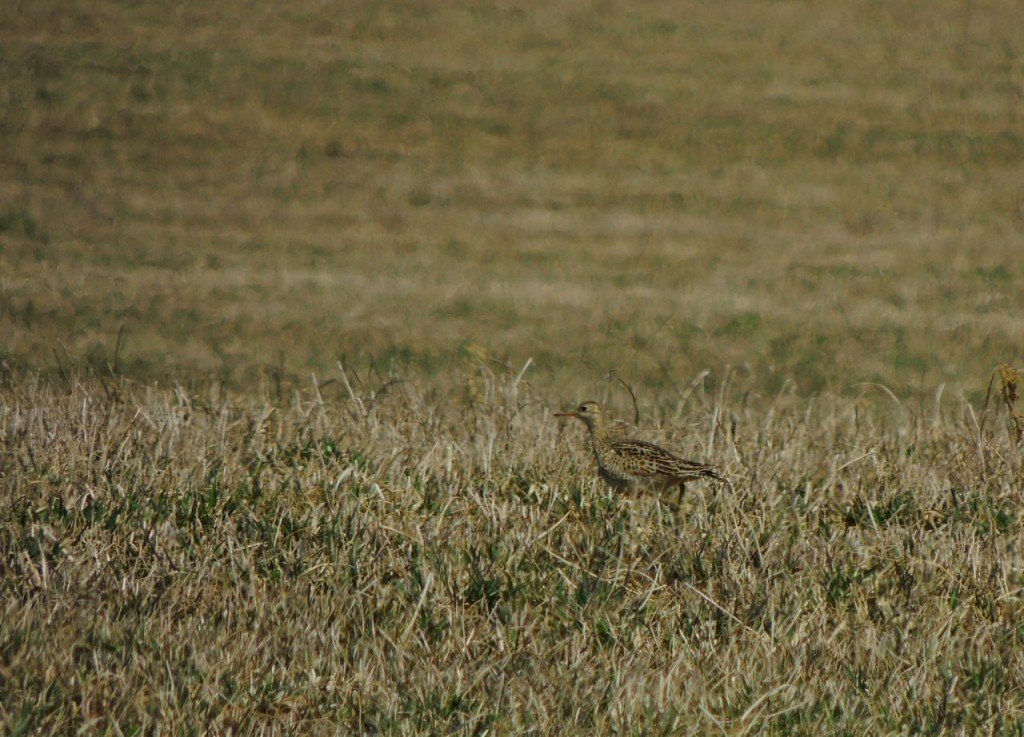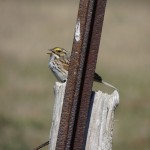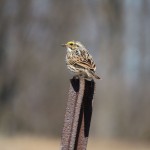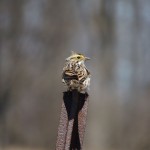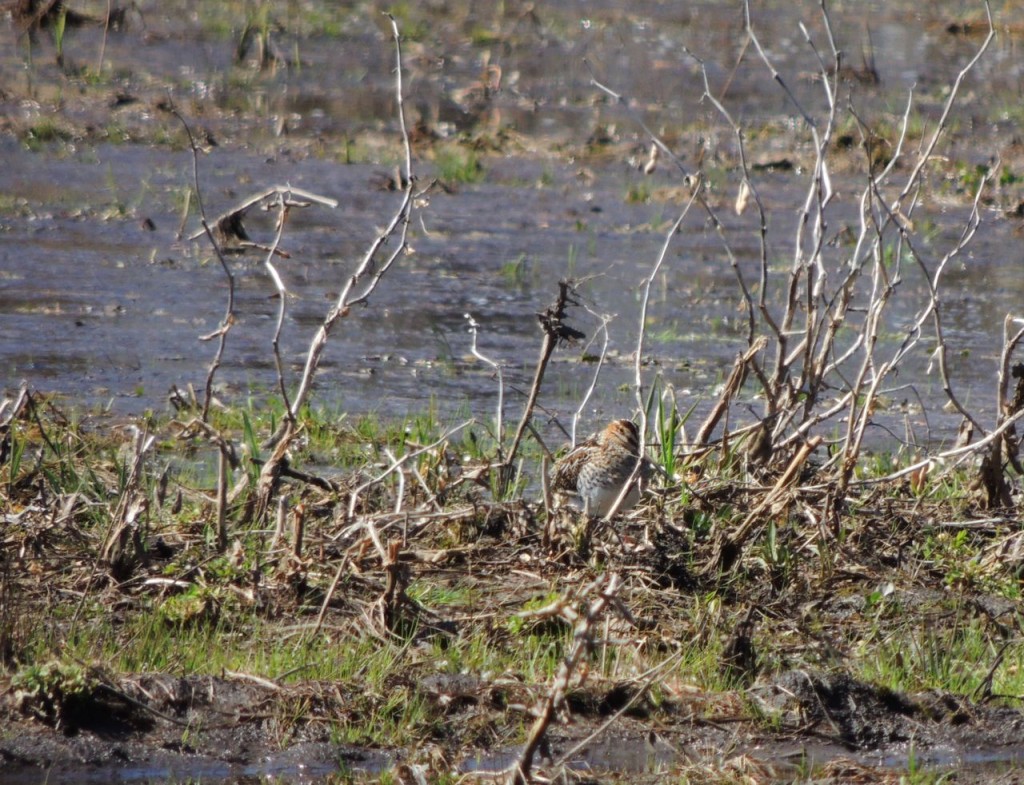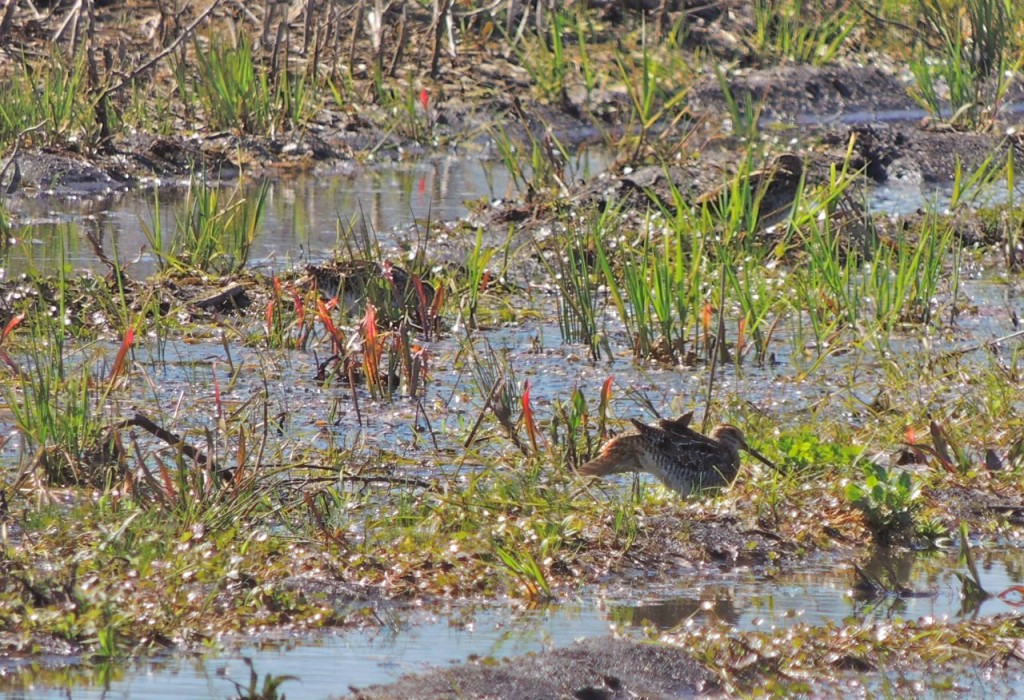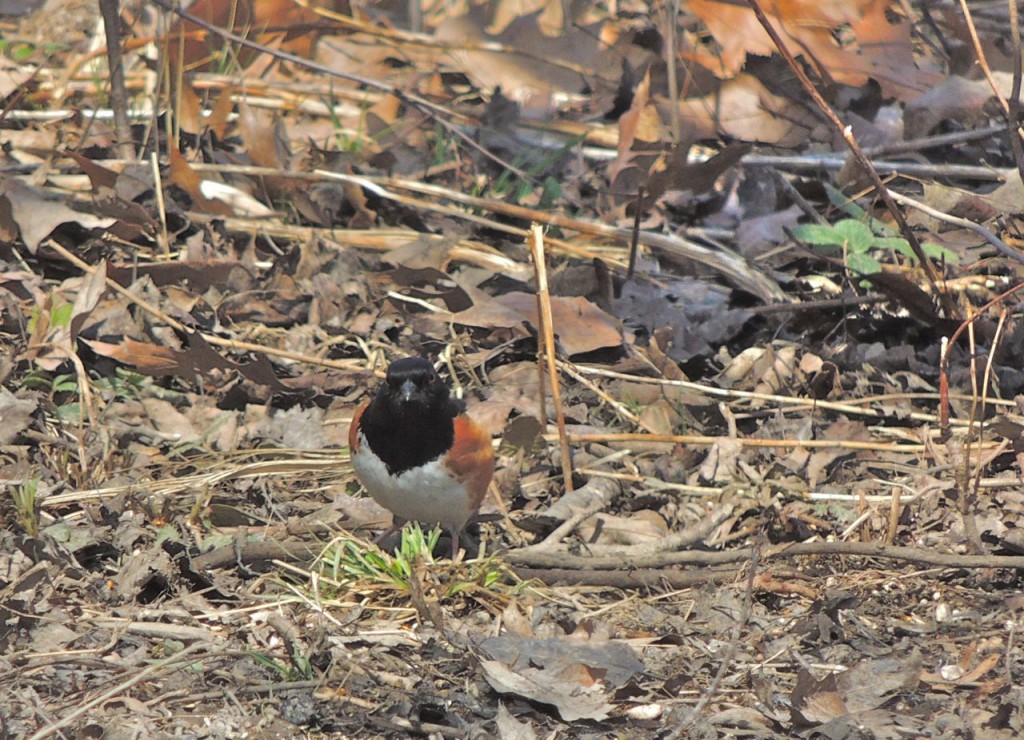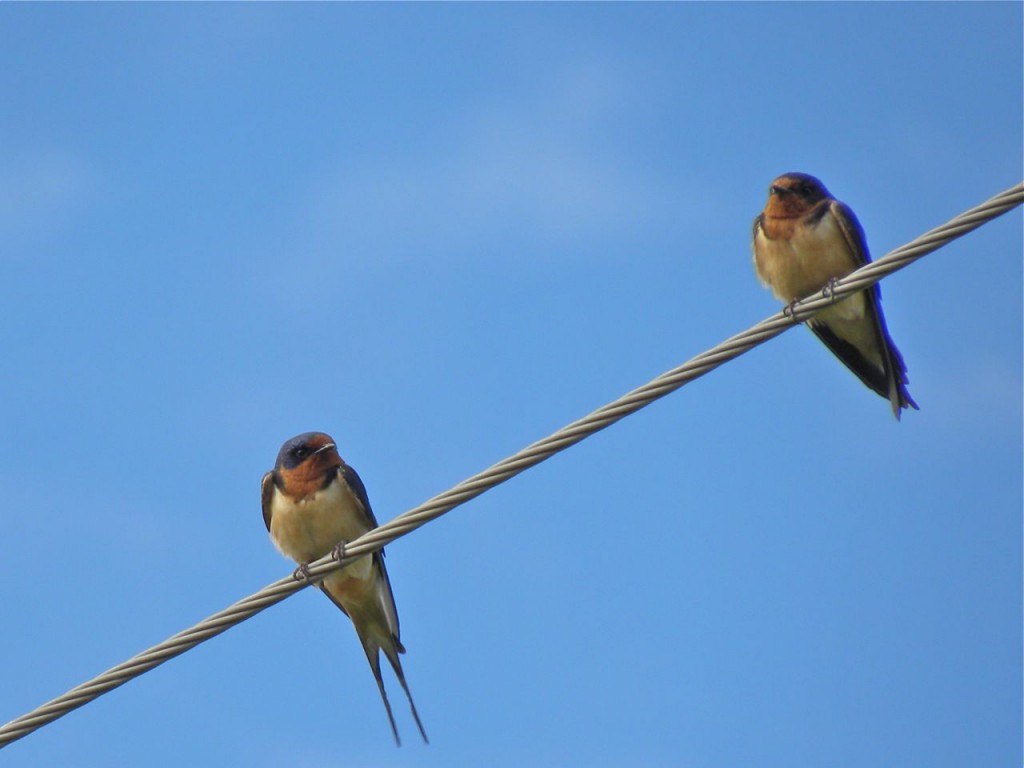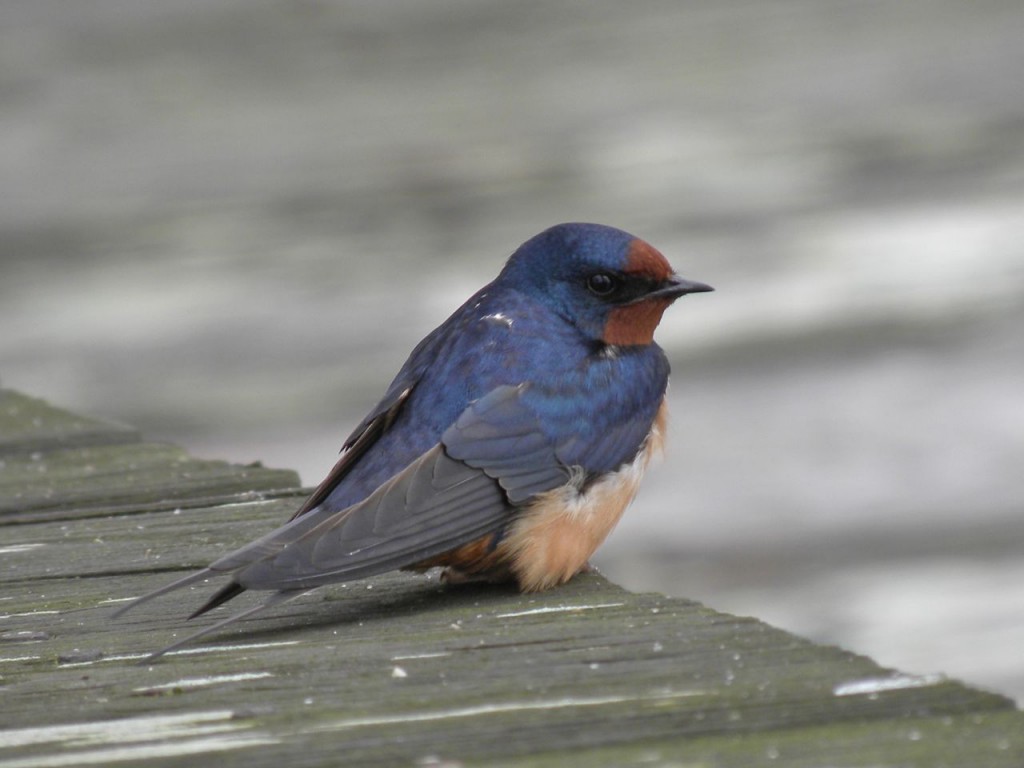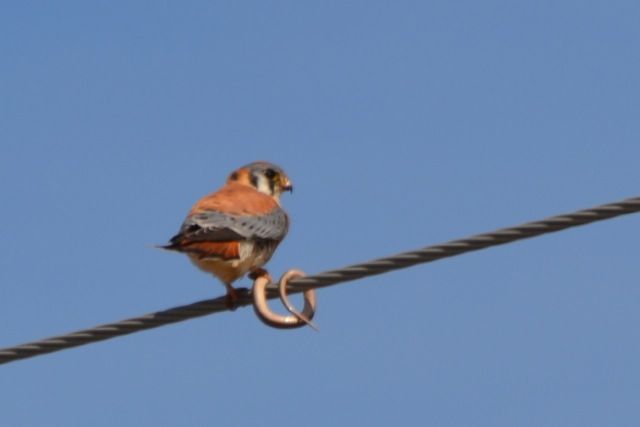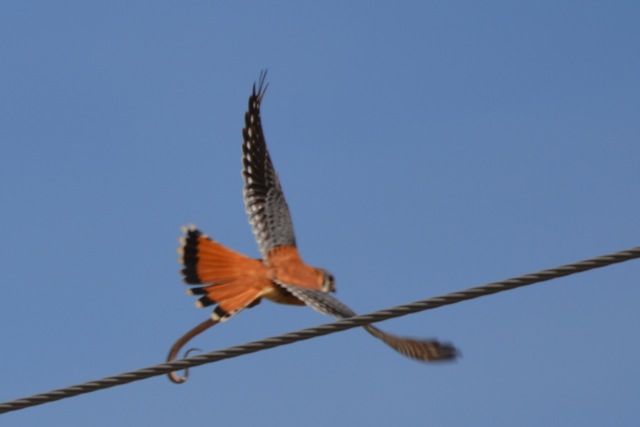27 April 2014. Long Point, ON. There may be those who will take issue with my choice of Bird of the Day, a Brown Thrasher, scarcely a rarity and nor is it out of season. It was one of a large handful of really notable sightings (and soundings) in a full day spent at Long Point, arguably the best year-round bird watching location in Canada, and maybe one of the top five in North America.
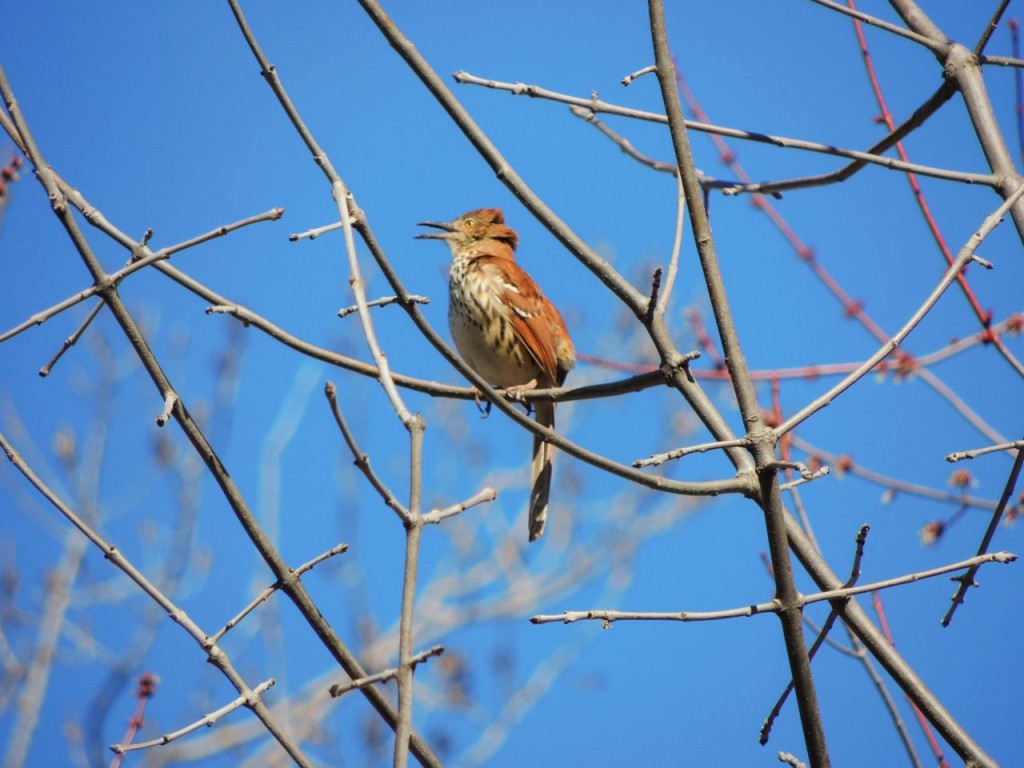
This Brown Thrasher made me stop and stare, it made my jaw drop as I listened to it. Brown Thrashers are famous for their song, a spontaneous and extemporaneous outpouring of notes, liquid, loud and frequently delivered in twos. (Follow the link and listen to a McCaulay Library recording of a Brown Thrasher recorded near Baltmore in 2000. I’m willing to bet you’ll have to stop and listen.)
I followed it around a deserted campground as it moved from tree to tree uncertain whether I posed a serious threat or was just another vague nuisance. It was reluctant to allow me to get too close but when it found a branch close to some rather desiccated High-bush Cranberry berries it was content to drop its guard for a couple of minutes and allow me to move in for these shots.
I have to say that those other notables really tugged at me. One, a Common Gallinule, was a first in North America for me. As a child in England, I encountered them often, we knew them as Moorhens and could find their nests along the edge of quiet backwaters. Today, when one flew away across a weed-choked inlet I was certainly surprised, but somehow it was more of an “It’s about time” reaction. Still, a good sighting. But not perhaps as inspiring as the American Bittern that rose clumsily and awkwardly from the constraints of a cattail marsh as I wandered along a wet trail. It came just moments after flushing a Wilson’s Snipe that was crouching a few steps ahead, it flew off exclaiming with what Pete Dunne aptly describes as “…a loud scraping protest ‘yrrrch’….” .
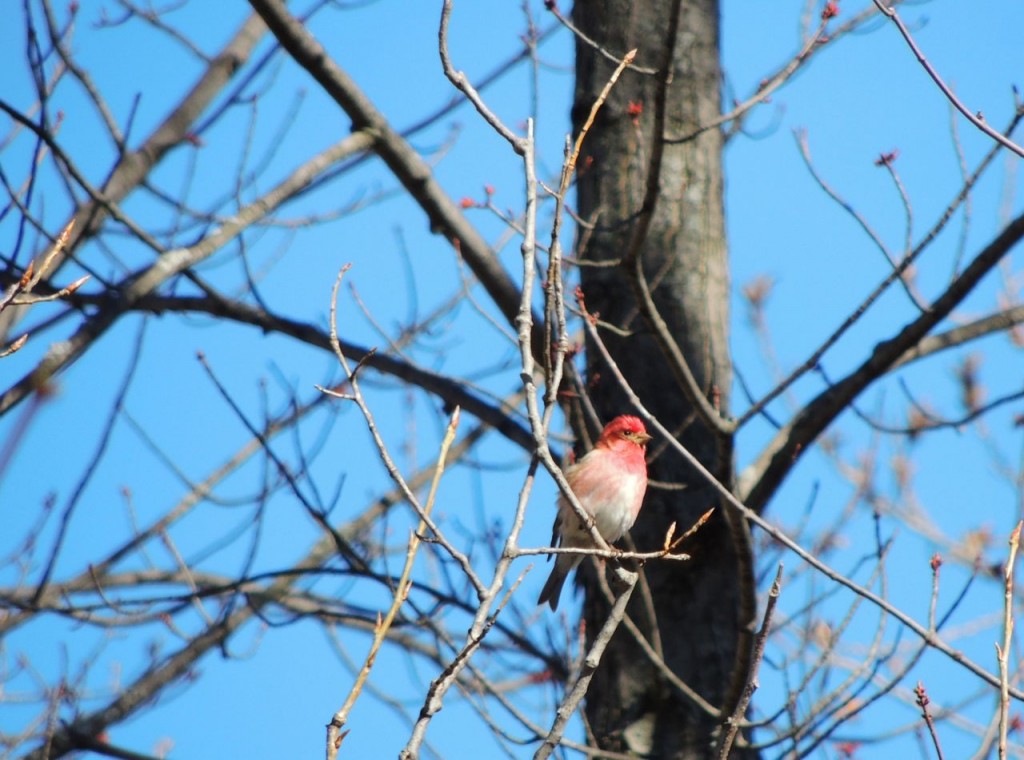
A singing Purple Finch, coursing Forster’s Terns, singing Pied-billed Grebes (more of a wailing yodel – click the link for another great McCaulay Library recording) and the resonant hammerings of Yellow-bellied Sapsuckers all filled the day with memories. I recorded well over 50 species adding Blue-winged Teal, Eastern Towhee and Hermit Thrush towards the end of the day, then I drove two hours home, sunburned, windswept and acutely aware that I’d wolfed down just a skimpy breakfast and completely missed lunch.
